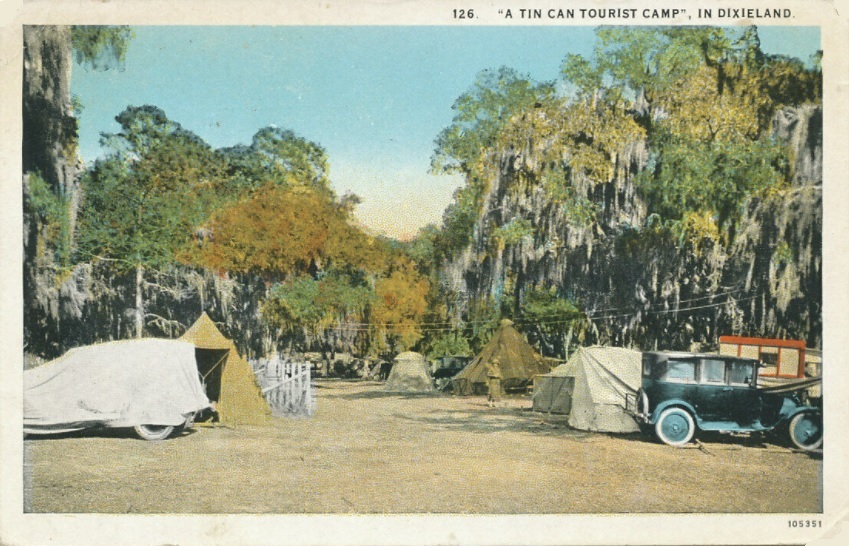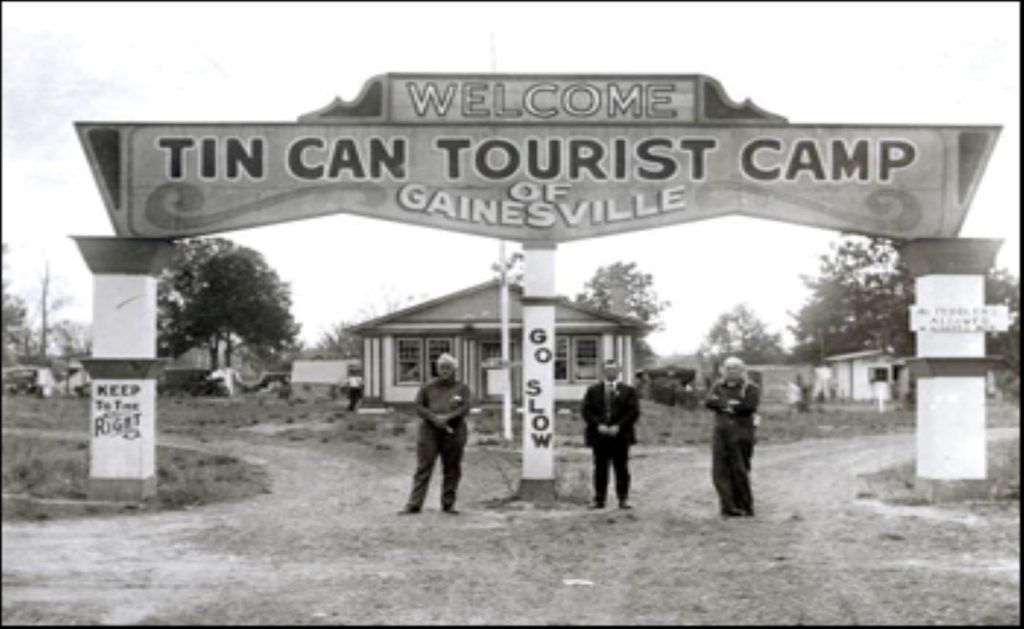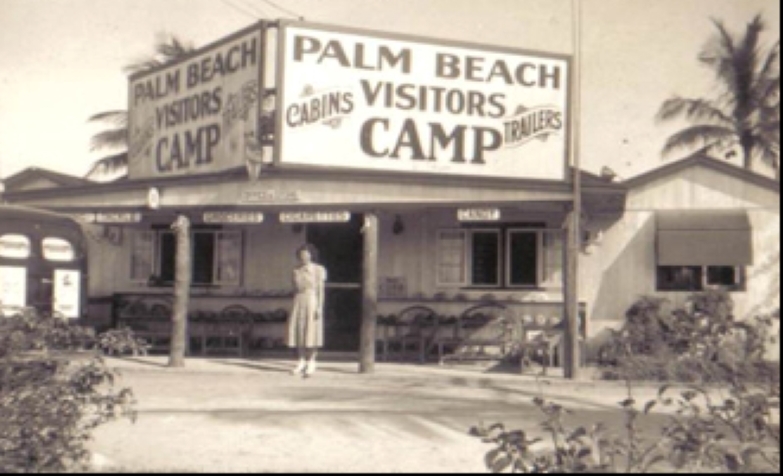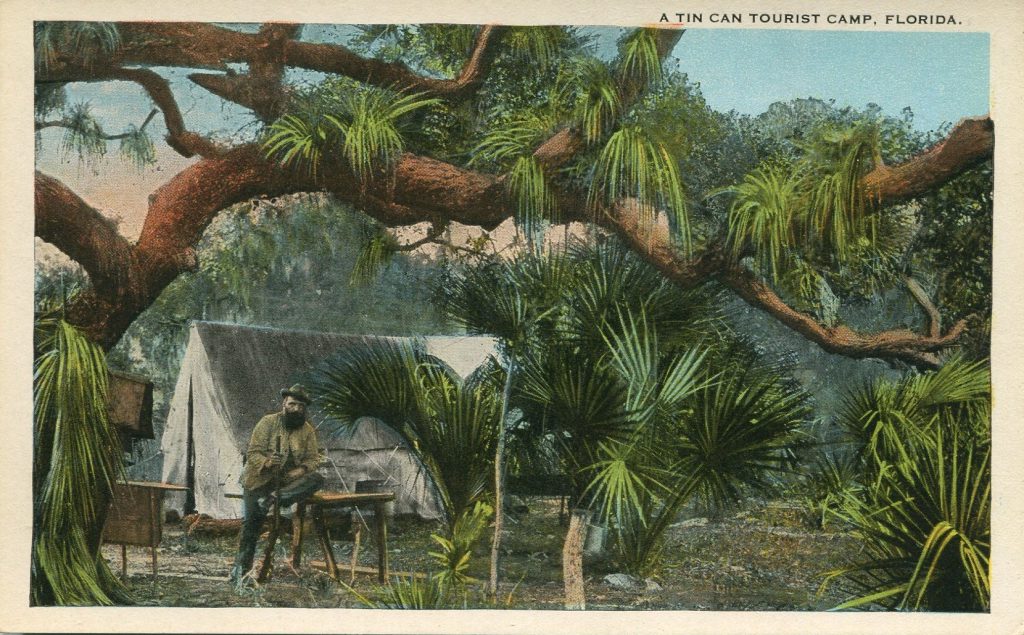George “Burt” Martin
Tin Can Tourist Camps
The twenty-five years between 1890 and 1915 were ones of enormous change. The industrial revolution had spread its influence on society and economics worldwide. Then, the expansion of political ideals to the masses with Woodrow Wilson’s New Freedoms pledge were enabling Americans to take advantage of opportunities never dreamt of before. Travel was one such opportunity.
The enthusiasm for travel created a growth industry across America – tourism, but especially in the southern states. New highways were opening and developers were busy designing ways to get travelers into a spend money mood. Some of the new highways that made travel easier were the Mississippi River Scenic Highway, the Lone Star Trail, the Atlantic Highway, and the Dixie Highway. The Dixie Highway, inspired by the Lincoln Highway, which recently connected the east coast to the west, was planned to connect the north to the south with in-between stops in Michigan, Indiana, Ohio, Kentucky, Tennessee, Alabama, and Georgia.
Not only along the Dixie Highway, but many others, sprang up all the expected amenities: gas stations, hotels and motels, restaurants, garage and mechanic service centers, and places that were affectionately called “Tin Can Tourist Camps.”

It was obvious that such places would find their roots in Florida because of the weather. Florida’s “gentle winters” are still the primary reason so many northerners leave home in winter. Sure, travel had become an important ingredient in the American lifestyle, but not everyone could afford train tickets, hotel stays, and restaurant meals. The Tin Can camps became the optimum compromise.
Pack your picnic tent in the trunk or hitch your travel trailer to your bumper and hit the road.

If you chose Florida as your destination, you could finish your trip in Gainesville, Florida. G’ville is far enough south that the weather is good, but you avoided two days of driving and saved nearly five-hundred miles worth of expenses.

When your travel destination included the warm, soft breezes of the Caribbean’s Gulf Stream, continuing to the Atlantic coastal areas around Palm Beach would be a good idea. Dozens of locations similar to the place seen in this real-photo card stretched north from Miami to Daytona and south to Key West.

The best part was that the campsites were free and so was the nightly entertainments, be they barn dances, recitals done by local music students, and sometimes a revival minister who happened to be in the area on-tour.
The earliest camps had little charm; they were often not much more than a clearing along the road with a few scattered palm trees. However, as the popularity grew, running water (hot and cold) in showers and laundry rooms was added for a fee and even more importantly there were indoor toilet facilities and dump sites for travel trailer waste tanks.
Oh yes, it needs to be said, for those with children who “wintered” in Hillsborough County (Tampa and vicinity) for only fifty cents per week the children from the camps could attend school.
I’m not sure what curricula they taught, I imagine it was the standard, “reading, writing, and ‘rithmetic,” but I doubt that the Tin Can Camp hymn was part of any music lessons. If you care to sing, the lyrics are on the cards below.

In 1919 the T. C. T. (the Tin Can Tourist) association was formed to encourage tent and travel trailer enthusiasts. The center of their activity was in the Tampa area, on the Gulf Coast of Florida in a place call De Soto Park. The T.C. Tourists were active well into the late 1940s. There is a considerable Internet presence – Google: tin can tourist history.
Neat! I have some on 1931-55 “linens”, like trailer parks and motor hotels, but not “real photos”. Thanks.
Interesting look at tourism of a century ago.
Oh these are wonderful postcards that so appeal to me. Thanks for featuring them in this article and giving background information, and just seeing these great images. Much appreciated.
Very nice article about early Florida,,, Thanks.
Interesting!
What beautiful and colorful cards! They reminded me of a road trip from NYC to New Orleans for the purpose of listening to old-time jazz. It was the early 1970s and we camped in campsites along the way that looked a lot like these cards. At that time two girls with a Karmann Ghia and a pup tent were perfectly safe and at home in these locations.